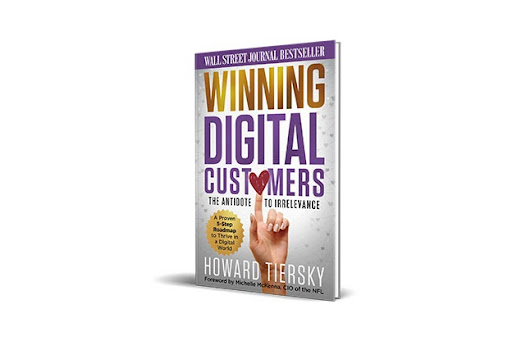Insights | By Howard Tiersky
9 Reasons People Resist Change
Digital transformation can revolutionize the customer experience and drive business success in the digital age, but executing this requires critical changes across the company. And people, in general, do not like change.
One of the biggest mistakes a leader can make during a transformation is to assume that the change they want to drive is so obvious and necessary that nobody “in their right mind” would resist it. Unfortunately, a lot of people will.
Leaders of transformation need to make an effort to truly understand the reasons for their organization’s resistance to change so they can be better prepared to deal with them. Here are nine reasons people oppose change.
1. EVOLUTIO
NARY PSYCHO
LOGY
For most people, resistance to change is hardwired into their DNA. Before modern society, humans lived in a far more difficult and dangerous time, so once they found a good hunting spot or a safe cave to hide in, they didn’t give it up. Since change meant great risk to life and limb, people avoided messing with their “recipe for success.”
When trying to inspire change, leaders need to recognize that they are often working against the way human brains have evolved. Just like other fears, this preprogrammed fear of change exists for historical survival reasons. It may no longer be so useful in modern times but most people still can’t easily switch it off.

2. PERSONAL BENEFIT
Evolutionary programming aside, even in our modern world, change is not necessarily good for everyone.
Executives who have built long careers within the current structure will naturally resist transformation when they see that it threatens their job security. Similarly, it’s hard to expect factory workers to get excited about robotic manufacturing or call center workers to embrace AI-driven chatbots.
If a new product or project is truly going to be transformational for the business, it will most likely face resistance. And people who oppose it will find ways to undermine it along the way.
Many innovative products with a promising future were killed through internal sabotage. As soon as there was any misstep in the transformation initiative—as there always is—the opposition was ready to pounce and convince the powers-that-be that it’s time to shut it down.
And even when the proposed change doesn’t threaten people’s jobs, it may still sound messy and chaotic. Change is disruptive, so it’s logical for many people to resist it simply to avoid personal discomfort, and they even convince themselves that it’s bad for the company in order
to justify their position.
3. INDUSTRIALI
ZATION MINDSET
Most enterprises today are built on the principle of industrialization, where “experts” figure out how best to produce a product or service, and employees are trained in these methods and expected to comply with them.
This leads to extensively documented workflows, tons of policies and procedures, detailed performance metrics, and very often, a largely ignored suggestion box in the break room. Organizations with this kind of culture are designed to keep doing the same thing over and over, not to transform.
Teams who have grown accustomed to this mindset can view rapid change as confusing and unnatural, and they will most likely resist it.
4. THE HYPNOSIS OF PAST SUCCESS
Many pre-digital companies have a track record of success during times when change was not as essential as it is today. When faced with the pain and risk of change, both management and the rank-and-file may question whether such transformation is truly necessary.
After all, the brand has been successful doing things the same way for many years. This mindset tends to encourage denial of the real urgency of change.
5. THE FORCES THAT CREATE SILOS
Large organizations are often designed in silos–different departments, divisions, teams, and even corporations, each with their own leadership, processes, systems, metrics, and culture.
This kind of structure can discourage individuals from working together in a way that supports enterprise-wide transformation toward a unified customer experience.
To fix this issue, it’s crucial to first understand the forces that keep things this way. Some people may be benefiting from this status quo, even if it’s harmful to the organization. If these underlying forces are not addressed, the problem can easily resurface despite efforts to change things.
6. ADDICTION TO A LEGACY BUSINESS MODEL
Real success in digital usually requires a shift in business model.
Companies that cross over to digital often realize that they need to provide for free what they used to charge for, sell as a subscription what used to be “a la carte,” or monetize via advertising things that used to be paid for in other ways. Those that do so flexibly often find that they can gain more scale, revenue, and profit than they did using the legacy approach.
However, achieving an effective digital strategy takes experimentation, an assumption of risk, and most likely some failure along the way. It’s not always possible to ensure that there will be no disruption in revenue during the transition, and for many companies, this is the hardest bridge to cross.
7. LACK OF LEGAL FLEXIBILITY
When Google first started their search engine, it was unclear whether they had the legal right to “spider” other companies’ sites; some even threatened legal action. If Google started as a project within a large media company, it might have been shut down at the first legal challenge.
Many innovative ideas involve a willingness to operate in areas that are not yet legally well-defined. Since large companies tend to be very conservative when it comes to legal matters, it’s difficult for them to pursue innovative opportunities that smaller companies would seize.
8. INVESTOR EXPECTA
TIONS
Investors in mature companies have certain financial expectations of profit and dividends that may not be consistent with new digital investments. A drop in net revenue even for one quarter can easily lead to a decline in share price.
Under this pressure, the CEOs of major brands can feel like their hands are tied when wanting to invest in the future at the level necessary to win in the digital world.
9. LACK OF ALIGNMENT AROUND THE SOLUTION OR EXECUTION
Of course, one reason why people resist change is that they just don’t agree with its direction.
Even when someone agrees with the general idea of transformation, they still need to be convinced to align to a specific change, and good people can disagree on the best course of action.
The changes involved in digital transformation can seem profound and existential, so it can be hard for people to align if they don’t feel that the correct vision has been identified. Sometimes this disagreement leads to paralysis.
IN SUMMARY
Leaders of transformation will have to deal with a few of these reasons, or maybe even all of them as well as others that are not on this list. But even though change may be turbulent, it is absolutely necessary in the digital age, and the results are worth the effort.
So how can you drive change despite the many obstacles? Stay tuned for the next issue, where I will talk about 11 tactics that have worked well in the transformation initiatives I’ve been a part of.
Need help with driving transformation in your organization? Let’s talk. Schedule a call now.

My Wall Street Journal bestselling book, Winning Digital Customers: The Antidote to Irrelevance, contains a blueprint for developing a successful strategy for your company as well as practices to aid in identifying new trends and opportunities to explore. You can download the first chapter for free here or purchase the book here.













